March
2017
|
We
didn't do too bad this month. It started in the first week with a nice
Bezique set, VSS Salon pattern with a set of Dutch scenic aces that we
did not have yet. It came from the Dutch auction site. Ebay brought a
nice "Model A" set by Banco from Paris as well as a nice
Italian fortune telling deck called Portafortuna. |
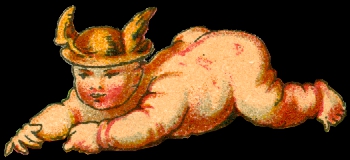 |
|
But the
highlight of this month was a long weekend in Paris, with the
international trading bourse by ACCART as a good excuse to go. Joop did
the usual markets on Saturday. This time the Porte de Vanves as well as
the Porte de Clignancourt brought some great finds. The Tarot Chinois by
Lequart and an Aluette deck by Charles Maurin, both from around 1865,
were shown on FB. We didn't show this deck there, because we already
knew that this one would be shown here. |
The deck had
been on Joop's wish list for quite a while and finding this German deck on a
Parisian market was quite a surprise too. The fine detailed, somewhat heroic
designs, inside the ornamented borders, together with the fine
chromolithographic printing and the unusual suit symbols, did the trick for
him
The deck was
printed by the lithographic printshop of J.G. Fritzsche from Leipzig (Germany)
and was published in 1883 in commission by Dr. Timon Schroeter from Jena.
According to Jean Darquenne the designs were done by Jacob Hirsch &
Martin Lämmel. The deck is known as New German Playing Cards or the Radish
deck. The deck has German indices, of which the O(ber) usually represents a
higher ranking person than the U(nder), which is accentuated by the position of
the suit symbols. The K(önig) usually shows royalty. In this deck 4 mediaeval
German Emperors, who were the most important to have reigned the Holy Roman
Empire, roughly between 800 and 1500.
|
We'll show them in reversed order, so starting with
the youngest, Maximilian I and ending with the oldest, Charlemagne. |
|
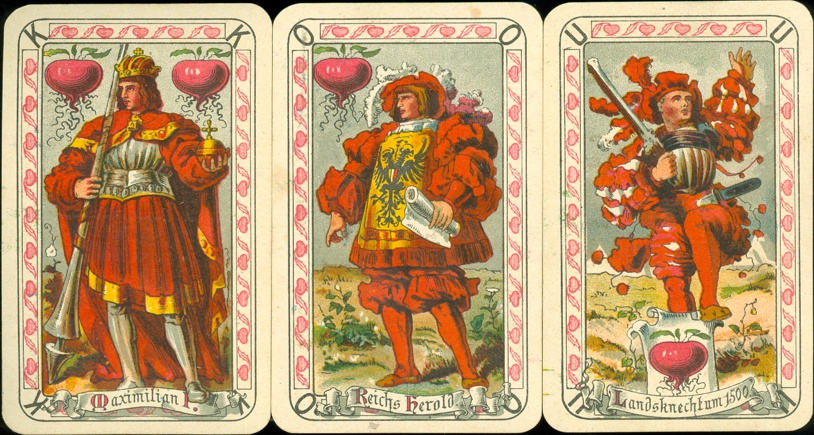
|
|
Maximilian
I (1459 - 1519) became King of the Romans (also known as King of the
Germans) in 1486 and, although he hadn't been crowned by the Pope, he
ruled over the Holy Roman Empire from 1893 until his death. He's
accompanied in this suit by an imperial herald and a lansquenet from
around 1500. It's the only court card where a date is mentioned, but it
seems that the K, O and U in each suit are dressed in clothing from
their era. |
|
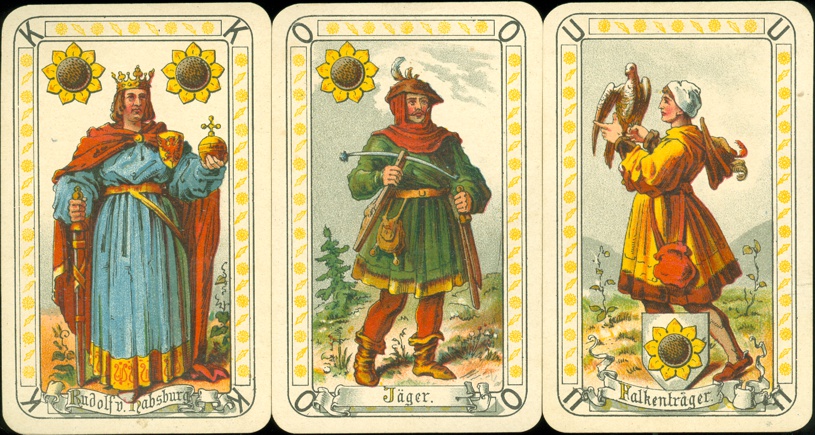
|
|
Rudolf
of Habsburg (1218 - 1291) became Count of Habsburg in 1240 and was
elected King of Germany, formally known as King of the Romans, in 1273. |
|
In German suited decks the
"deuces" can be seen as aces. Suit symbols are: radish, sun
flower, ivy and acorns.
CLICK ANY OF THE ACES TO SEE ALL THE ILLUSTRATED PIP CARDS. |
|
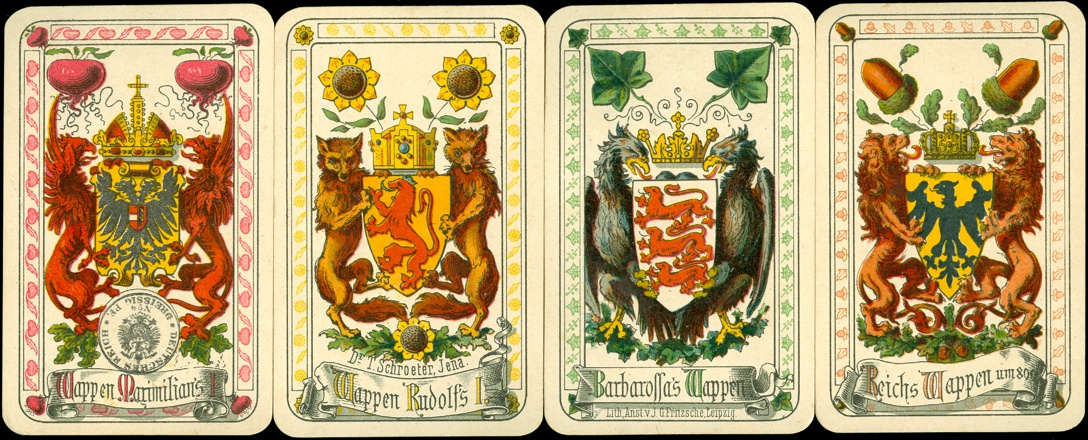
|
|
The deuces show personal heraldic shields of
Maximilian, Rudolf and Frederick and the national shield of the Roman
(German) Kingdom from around 800. |
|
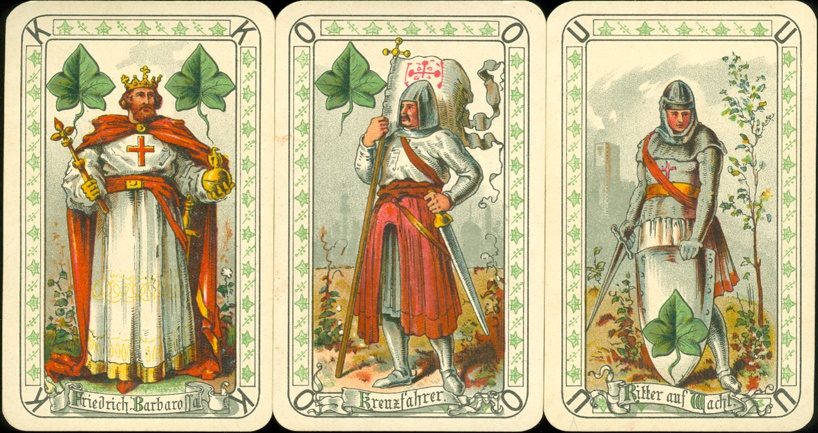
|
|
Frederick
I (1112 - 1190) is better known as Frederick Barbarossa (red beard in
Italian) became King of the Germans in 1152 and King of Italy in 1155. He
was crowned as Holy Roman Emperor by the Pope in that same year. He took
part in the Third Crusade and drowned in the Saleph river, near the
Silifke Castle (Turkey) where he had set up his camp. His Ober is a
Knight of the Cross and the Under shows a knight standing guard. |
|
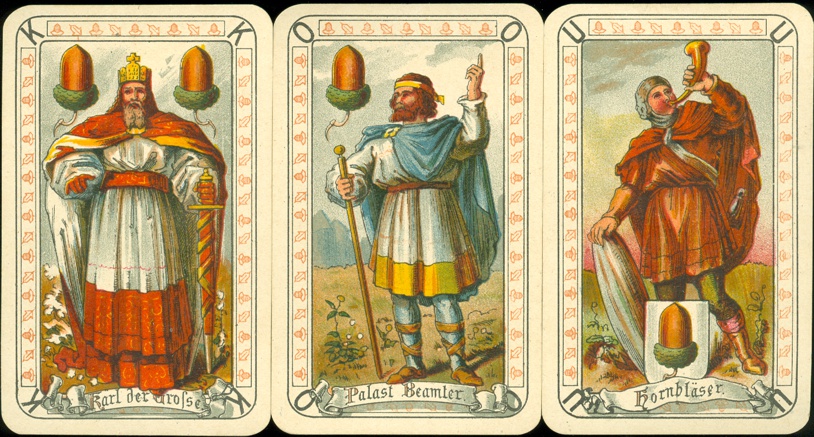
|
|
Charles the Great
(Charlemagne) has been called the father of Europe, as he has united most of
western Europe during the early Middle Ages. He was born in the 740's and died
in 814. He was King of the Franks from 768, King of the Lombards from 774 and
Emperor of the Romans (Germans) from 800. The Ober is a Palace civil servant and the
Under a horn blower.
|
BACK
TO PRESENT MONTH





